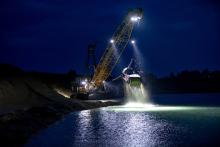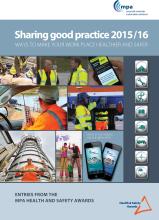
Running out of sand? The European Aggregates Association, UEPG, has its say.
For a couple of years YouTube, Twitter and Facebook videos such as “Scarcity of Sand” and “The War of Sand” have suggested that we are running out of natural sand for building projects around the world and that natural sand extraction harms the environment. The
Sand is a granular aggregates material used in construction. In 2016, sand and gravel production together made only 40.3% of the 2.7 billion tonnes of aggregates extracted. Sand is often composed of a wide range of different materials where its shape and resistance to physical pressure is relevant. It is finely crushed stone sized 0.063mm-2mm and can, if required, be manufactured from gravel or crushed rocks.
Natural sand is widely available in Europe, despite some local constraints, and its resources (not reserves) are thought to be pretty much infinite. The real issue with continued sand supply is not availability but accessibility.
So, why is natural sand – or aggregates altogether – not sufficiently accessible? This is partly linked to an evermore restrictive land-use policy giving other activities and claims higher priority than natural sand extraction. The sand we need for our economy is found, more often than not now, in nature protection areas, existing infrastructure and residential areas. This is a short-sighted policy which blocks valuable resources and leads to higher production and material transport costs. It is often forgotten or not understood that natural sand extraction is a temporary activity, with other land uses again becoming available once a period of extraction ends.
Through several campaigns and projects, UEPG promotes the compatibility of aggregates/natural sand extraction with environmental protection, and how long-term and sustainable access to such mineral resources maintains the crucial supply of aggregates to the construction industry.
While recycling is increasing thanks to better policies, technology and better sorting mechanisms for construction and demolition waste, it will only cover a European-wide average of 8% of total aggregates (including sand) demand.
To clean up some ‘aggregates sector myths’ spread on the internet, UEPG is now more visible and active on YouTube, Twitter and LinkedIn. AB
Find out more about UEPG, its campaigns and activities at:
Twitter: %$Linker:
LinkedIn: %$Linker:
YouTube: %$Linker:
UEPG, the European Aggregates Association, %$Linker:







